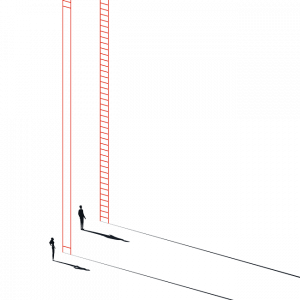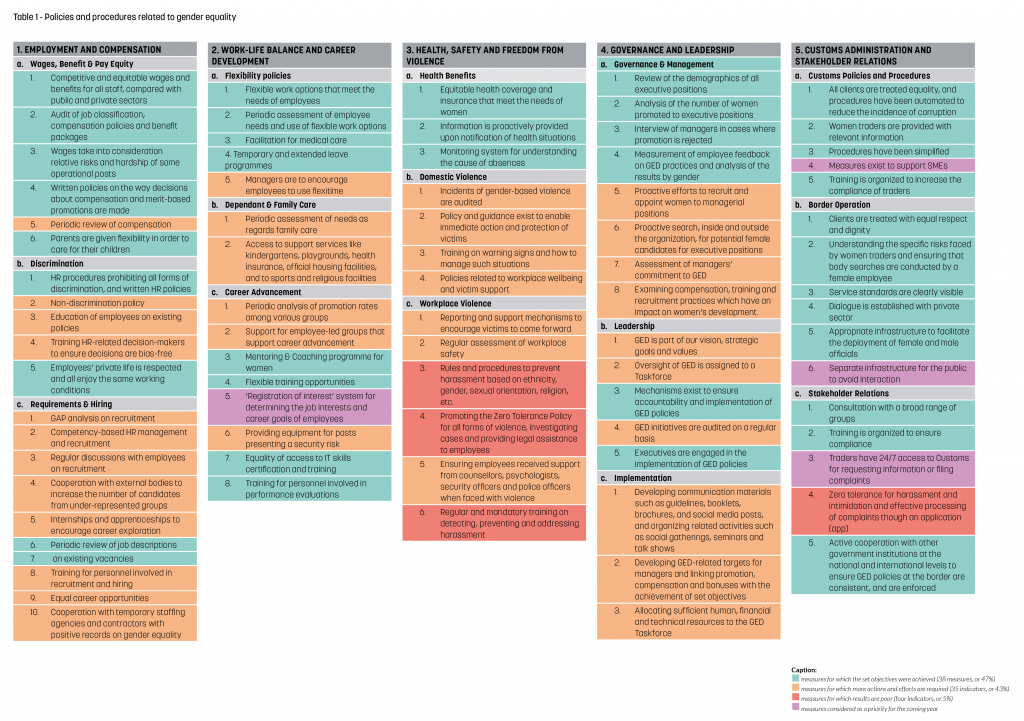Ensuring gender equality and diversity: Indonesia’s experience
18 June 2021
By the Directorate General of Customs and Excise of IndonesiaIn 2000, the President of Indonesia issued a decree requesting all government agencies to integrate the concerns and experiences of women as well as of men into the planning, implementing, monitoring and evaluation of policies and activities. This strategy, known as “gender mainstreaming”, aims at achieving gender equality. In this article, Indonesia Customs explains the proactive strategy it has adopted to ensure gender equality and diversity in the workplace.
In many countries, women and men have different living conditions, social roles and needs, including unequal access to and control over power, resources and institutions. The situations of women and men also differ according to region, age, ethnic or social origin, and other factors. The aim of gender mainstreaming is to take these differences into account when designing, implementing and evaluating policies, programmes and projects so that they benefit both women and men and do not increase inequality, but enhance gender equality.
In Indonesia, gender equality is explicitly guaranteed by the Constitution and has been further promoted through the ratification of the international Convention on the Elimination of All Forms of Discrimination against Women (CEDAW). In 2000 a Presidential Instruction on Gender Mainstreaming (INPRES No.9/2000) was enacted, requiring all government ministries and agencies at both the national and local levels to include gender mainstreaming in the planning, implementation, monitoring and evaluation of development projects. The Ministry of Finance, under which the Directorate General of Customs and Excise (hereafter referred to as Indonesia Customs) operates, issued a guidance document for all its units on the implementation of Gender Equality and Diversity (GED).
Gender Equality and Diversity Taskforce
In 2006, the Ministry of Finance decided to create a GED Taskforce to ensure effective implementation of gender mainstreaming. The Taskforce is made up of high-level representatives, including the Director General of Indonesia Customs, who are assigned the role of “Gender Champions”. The members of the Taskforce are mandated to develop the Ministry’s action plan for Gender Equality, coordinate GED-related activities, and monitor and evaluate their implementation within the Ministry and its various Directorates. As these staff members also have to perform their normal duties in addition to being on the Taskforce, they usually hold GED implementation-related posts such as budget officer or unit manager. They have also been given expert training on GED and on how to communicate on this topic.
They rely on their Directorate local offices for the day-to-day implementation of the GED policies and activities. The local officers are also responsible for monitoring and evaluating progress and reporting back to the Taskforce.
Key policies and procedures
Another key player within the Ministry of Finance is the Human Resource (HR) Department.
In this context, it seems useful to explain Indonesia Customs’ recruitment process. It is the Ministry of Finance which primarily selects and appoints officers to work in Customs from among the graduates of the State Finance Polytechnic of STAN, a government-affiliated college. The Ministry also publishes job vacancies open to anyone with the requisite qualifications. People with disabilities and those from remote areas are also encouraged to apply.
Together with the GED Taskforce, the HR Department has written policies and procedures to achieve gender equality and prevent, address, and provide protection from all forms of harassment.
The measures and practices implemented are summarized in Table 1. They include:
- drafting clear human resource policies and procedures (placement, transfer, promotion, leave, complaints, etc.), and designing compensation and promotion mechanisms.
- undertaking analyses aimed at identifying potential gender gaps in recruitment and other demographics (education, ethnicity, etc.) to determine whether women and minority groups are proportionately represented at each level.
- conducting periodic analyses of promotion ratios based on gender and other demographics to identify and mitigate potential gaps.
- providing opportunities for flexible working options, including working from home.
- undertaking regular workplace audits to detect any possible cases of gender-based violence and offer adequate protection and/or support to victims of such violence if needed.
- raising awareness of gender issues and discrimination based on cultural and ethnic background, through internal activities such as coffee mornings and seminars, as well as external activities aimed at a wider public, such as TV talk shows and visits to universities as part of the “Customs goes to campus” initiative.
Measures have also been taken to enhance the relationship with stakeholders, namely traders and other professionals involved in trade operations, and ensure that all are treated fairly and equally. These include:
- automating procedures to reduce levels of corruption and ensure efficient use of technology.
- developing a user-friendly, online system for reporting complaints.
- establishing “Contact Centre Bravo” for managing information requests and handling complaints through multiple channels such as telephone, e-mail and SMS.
- disseminating information through various channels (website, magazines, radio and TV), as well as via physical information desks located at each Customs office and local branch.
Gender-responsive budgeting
Gender-responsive budgeting seeks to ensure that the collection and allocation of resources is carried out in ways that are effective and contribute to the advancement of gender equality and women’s empowerment. It is based on in-depth analysis that identifies effective interventions for implementing policies and laws that advance women’s conditions or narrow existing gender gaps. The impact of each intervention on women and men is therefore assessed and, if a gap is found, the intervention will be redesigned.
Sex-disaggregated and other data

Before the budget, action plans and policies can be formulated, sex-disaggregated data must be collected and analysed. As “women” and “men” are not homogeneous groups with single aims and needs, data on age, gender identity, ethnicity, income and level of education, for example, should also be collected where possible. Indeed, GED policies are also aimed at tackling discrimination based on cultural and ethnic background, and are intended to reflect the needs of various individuals.
All employees are therefore required to provide personal data and documents, via the online filing system, when recruited. The information provided relates to previous employment history and financial statements. Access to this information is limited to certain employees.
Assessment against best practices
Indonesia Customs used the WCO Gender Equality Organizational Assessment Tools (GEOAT) to assess whether the existing policies and procedures on gender equality, as implemented at its Headquarters, are in line with best practices and to identify areas where improvement may be needed. Some measures listed in the GEOAT were left out during the assessment.
The Administration also uses an analytical tool called the Gender Analysis Pathway (GAP) for conducting gender analysis. It comprises three different stages:
- Stage I focuses on an analysis of data disaggregated by gender to identify any gender gaps and gender issues.
- Stage II focuses on the formulation of gender policy.
- Stage III focuses on the development of an action plan and the identification of quantitative and qualitative objectives for each action.
An assessment of all the measures listed in Table 1 below (click on the image to enlarge) was completed in 2018: in green are the measures for which the set objectives were achieved (38 measures, or 47%), in orange are those for which more actions and efforts are required (35 indicators, or 43%), in red are those for which results are poor (four indicators, or 5%), and in purple are those considered as a priority for the coming year. The four measures for which results were assessed as poor are also considered a priority. In cases where it is feasible to collect and analyse data for a given indicator, quantitative indicators have been developed.

Main challenges and lessons learned
As is stated in the GEOAT, “gender equality is not about always reaching a 50 %-50 % gender balance in its workforce. Instead, it is about creating the conditions and opportunities to allow women and men, as individuals with different cultural and ethnic backgrounds and needs, to have the same type of rights and opportunities based on their skills in a respectful environment”.
However, the data collected shows a continuing gender gap within Indonesia Customs: 82% of employees are males. The Administration does not favour male candidates when recruiting, however the data shows that 13,460 employees are male, compared with 2,915 female employees (data as at February 2021). In order to remedy this situation and demonstrate that being a Customs officer is not a preserve of men, the Administration has appointed female employees to field positions such as enforcement officers, patrollers and dog handlers.
More information
multilateral1.kial@customs.go.id

